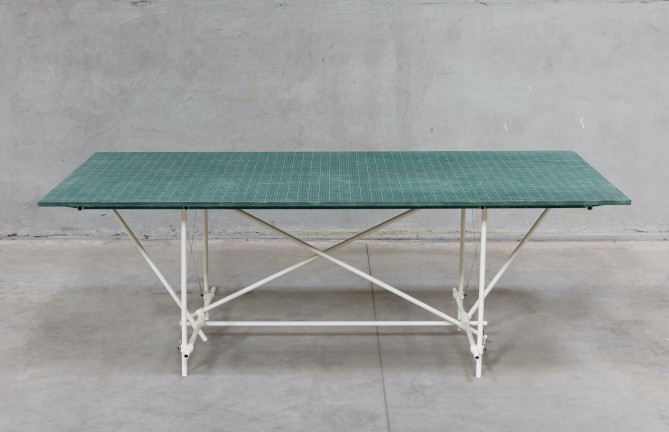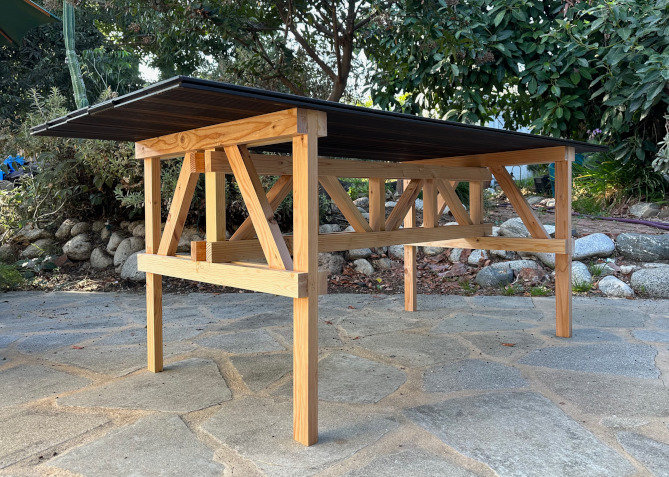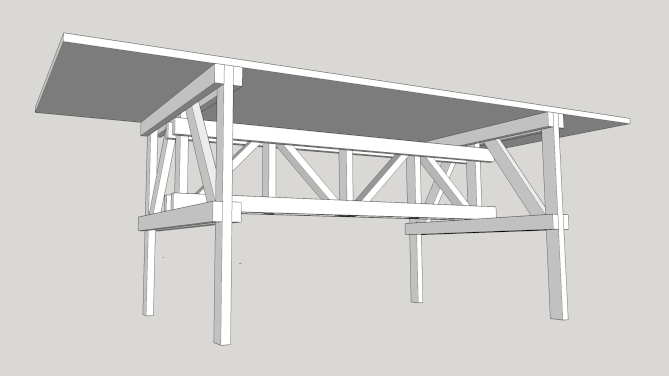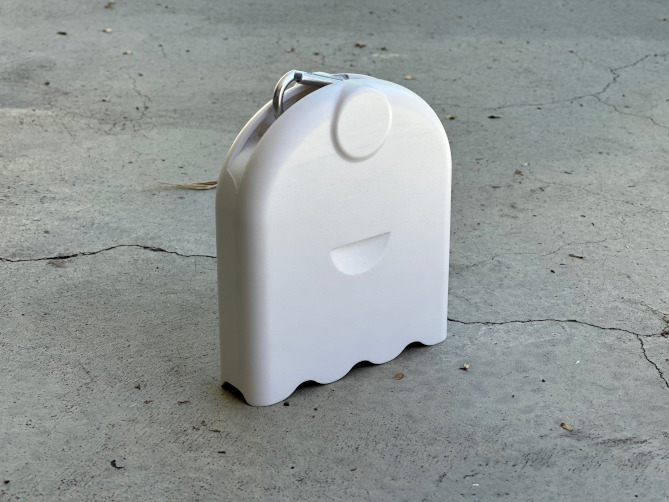
Grid Beam chair from gridbeam.xyz
Root Simple reader LeJun, responding to my post on my Enzo Mari table, left a link to two more ideas in the sphere of DIY furniture: Grid Beam and Open Structures.
Grid Beam, pioneered by Ken Isaacs in his book How to Build Your Own Living Structures, relies on either wood or metal with a regular series of holes drilled to accept bolts. Grid Beam is modular and you can use the method to make chairs, tables, beds and rooms. Pieces can be taken apart, reused and reconfigured. If you want to try it you’ll definitely want a drill press and a jig to make the holes uniform and square. Thankfully you can find many used drill presses in the wild as they are a common tool in both wood and metal shops.

Open Structures table from openstructures.net
Open Structures is a similar modular concept by Brussels designer Thomas Lommée done with metal tubes and connectors. I find it a bit more aesthetically pleasing than the drilled 2×2 lumber in the Grid Beam system, but you’ll need to be handy with metal if you want to try to homebrew this.
Note that I’ve got a whole roundup post about DIY furniture on Root Simple here. Many thanks to LeJun for the tips and I’ve amended that older post with Grid Beam and Open Structures.




